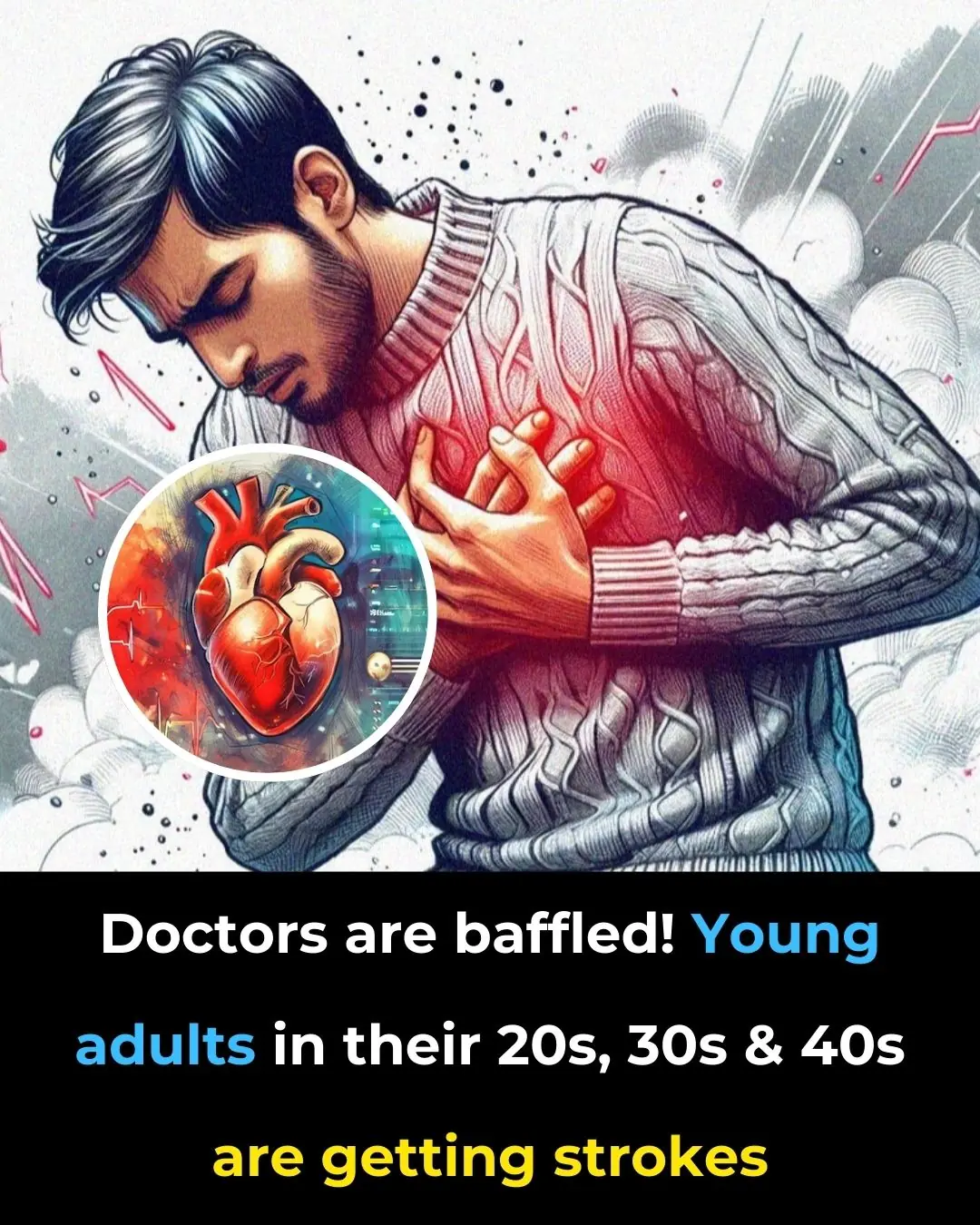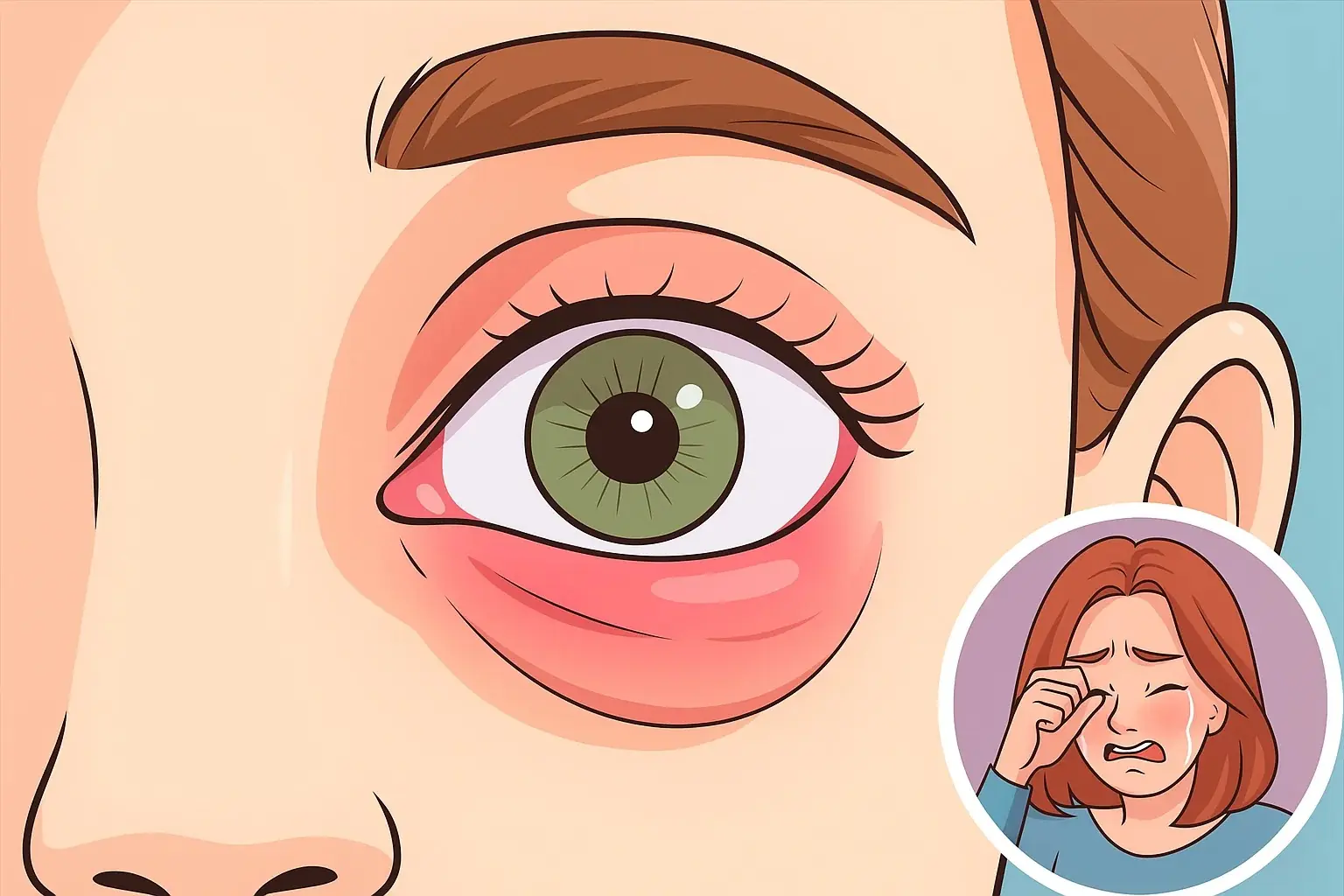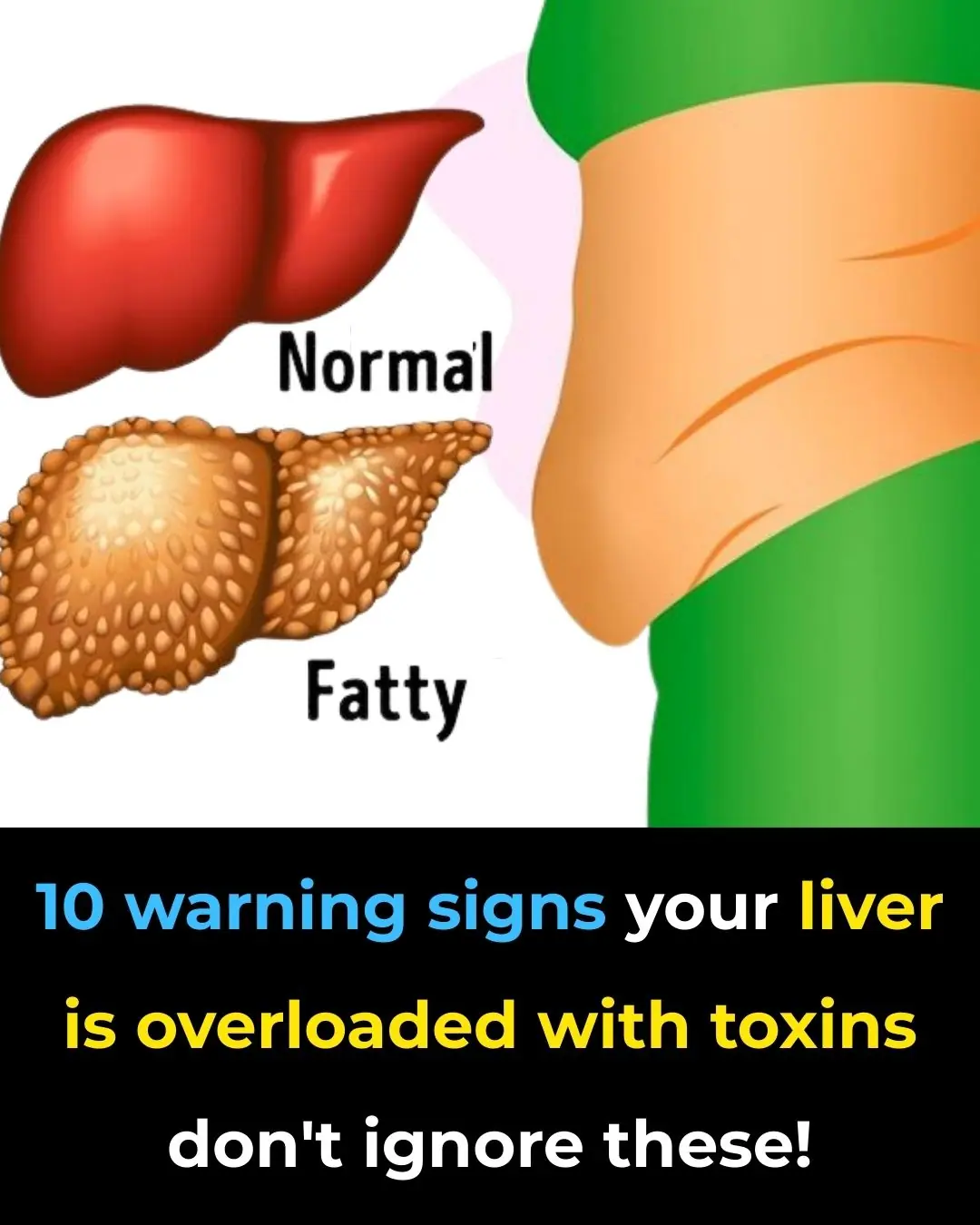
4 Silent Eye Changes That Could Signal Hidden Cancer — Don’t Ignore These Red Flags
Many people dismiss eye-related changes as minor or cosmetic issues. However, persistent or unusual eye symptoms can indicate something far more serious. Here are four key warning signs linked to cancers such as lung, liver, kidney, pancreatic, and even brain tumors that you should never overlook.

- Persistent Eye Bags or Swollen Eyelids
Occasional puffiness under the eyes is normal, especially after poor sleep or excess fluid intake at night. But when swelling persists for weeks, becomes darker in color, or worsens over time, it may be a signal of something deeper.
Research shows that lung tumors, particularly when advanced, can press against the superior vena cava — the large vein carrying blood from the upper body to the heart. This blockage disrupts circulation, causing swelling in the face and noticeable puffiness around the eyes. Studies reveal that up to 95% of superior vena cava obstructions are linked to lung cancer or non-Hodgkin’s lymphoma.
Similarly, liver and kidney cancers can impair the body’s ability to filter toxins and fluids, leading to systemic swelling that first appears under the eyes. Unlike temporary puffiness caused by lifestyle factors, these cancer-related eye bags are more stubborn and resistant to simple remedies.
- Abnormal Eye Discoloration
Changes in eye color are one of the most striking warning signs. Yellowing of the eyes (jaundice) is often caused by a buildup of bilirubin, a pigment linked to liver dysfunction. This may point to liver cancer, pancreatic cancer, or bile duct cancer.
In addition, specific eye cancers can cause distinct visual changes:
- The iris may develop dark spots that gradually enlarge.
- One eye may appear a different color than the other (a condition known as heterochromia).
- Persistent redness in the eyes, often mistaken for simple irritation, can sometimes be caused by inflammation of blood vessels triggered by malignant cells, particularly in lymphoma or ocular tumors.
Such eye discolorations are more than cosmetic concerns — they can reflect ongoing internal disease processes that demand medical attention.
- Sudden Vision Loss or Blurred Vision
Vision changes are often the first noticeable signs of neurological or ocular tumors. Symptoms may include blurry vision, double vision, narrowed visual fields, or sudden blindness in one eye.
Brain tumors such as pituitary adenomas, meningiomas, or craniopharyngiomas can increase intracranial pressure and compress the optic nerve, leading to optic disc swelling (papilledema) and gradual vision loss. In the case of eye cancer, the tumor may directly damage retinal or optic structures, sometimes causing abrupt blindness in one eye.
Unlike age-related vision problems, tumor-related vision loss tends to progress rapidly and unpredictably, making it a red flag that should never be ignored.
- Structural Changes in Eye Shape or Position
Noticeable shifts in the size, shape, or position of the eyes can also be signs of hidden cancers. Bulging eyes (proptosis), eye misalignment, or unusual squinting may be caused by brain or orbital tumors pressing against the eyeball.
In eye cancers, patients may develop distorted pupils, irregularly shaped eyeballs, or asymmetrical eye size. In children, retinoblastoma often presents with crossed eyes, heterochromia (two different iris colors), or painful eye pressure caused by glaucoma.
Recognizing these structural abnormalities early is crucial, as they often appear before pain or other systemic symptoms, allowing for earlier diagnosis and treatment.
Takeaway: Don’t Overlook What Your Eyes Are Telling You
Your eyes are not only vital for vision — they serve as early warning systems for conditions that could be life-threatening if missed. Persistent swelling, discoloration, sudden vision loss, or structural changes are not issues to brush aside with home remedies.
Consulting a medical professional when these signs appear can make the difference between catching a serious disease early and facing it at an advanced stage. By paying attention to these subtle yet powerful signals, you give yourself the best chance at timely intervention and recovery.
News in the same category


Proven Health Benefits of Eating Eggs Based on Evidence

52-Year-Old Man Dies From Diabetes—Doctors Reveal 4 Common Breakfast Mistakes That Can Wreck Your Blood Sugar
He thought he was strong and healthy, but one morning at work, his body gave in without warning. By the time he reached the hospital, it was too late. His story serves as a chilling reminder that what you eat for breakfast could quietly determine your ris

Husbands With These 2 Bad Habits May Put Their Wives at Higher Risk of Breast Cancer - Stop Them Now Before They Harm The Whole Family
The influence of a husband’s habits on his wife’s well-being is far greater than many couples realize. Small daily choices — whether neglecting exercise or lighting a cigarette — can quietly accumulate into significant health risks over time.

Press These Points for Wherever You Have Pain – Every Body Part is Linked to Your Palm and Foot

10 Cancer Causing Products to Remove From Your Home: Scented Candles, Air Fresheners and More

Texas Doctor Reveals A “Miracle Mineral” That Soothes Nerve Pain

Struggling to sleep? This simple eye trick can knock you out in minutes

7 essential vitamins every diabetic needs for nerve health

If you have these lines on your nails it is a clear sign that...

Symptoms Of Ovarian Cancer Every Woman Should Never Ignore

11 Silent Signs Your Body Gives Before Diabetes Strikes

Don’t Ignore These 9 Early Signs of Diabetes — Your Body’s Been Trying to Tell You

The Most Effective Ways to Get Rid of Bumps on Inner Thigh (Backed by Science)

Early Signs of Liver Damage & How to Strengthen Your Liver

Shingles Vaccine May Protect Against Dementia, New Study Suggests
Could a simple vaccine hold the key to protecting the brain against one of the most feared diseases of aging?

Surgeons Face the Highest Mortality Risk Compared to Other Physicians, Study Finds
From elevated cancer rates to stress-induced cardiovascular disease, the profession carries health costs that demand greater awareness and intervention.

The Most Dangerous Time to Sleep: Why Going to Bed Late Can Harm Your Health
News Post

Flaxseed Gel: The Natural “Botox in a Jar” That Smooths Wrinkles and Restores Youthful Glow
With flaxseed gel, you’re not just applying moisture—you’re giving your skin the building blocks it needs to repair, renew, and glow from within.

Toothpaste and Lime for Hair Removal: The Surprising DIY Remedy That Could Replace Laser Treatments
With just two simple household ingredients, you can try a gentle, budget-friendly, and surprisingly effective solution at home.

Cabbage Leaves Wrapped Around Your Legs: A Simple Remedy With Surprising Benefits
Packed with anti-inflammatory, detoxifying, and soothing properties, cabbage is more than just a kitchen staple — it’s a hidden healing ally.

10 Life Saving Tips for Lowering Stroke Risk & Early Signs of Stroke

Put a Bowl of Salt in the Fridge: The Genius Trick I Regret Not Knowing for 30 Years
A single bowl of salt might seem insignificant, but its impact on your fridge — and your household — is anything but small.

Proven Health Benefits of Eating Eggs Based on Evidence

Should You Peel Ginger Before Eating? The Shocking Truth Everyone Needs to Know
he peel is not harmful; in fact, it carries unique benefits. By using ginger correctly and storing it properly, you can unlock its full potential for boosting immunity, improving circulation, and keeping your

80% of Heart Attacks Can Be Prevented—Just Do These 5 Easy Things

3 Dangerous Mistakes People Make With Plastic Wrap—And How They Could Secretly Harm Your Health
Plastic wrap is undeniably convenient, but it must be used correctly. Missteps like reusing, heating, or buying low-quality products can gradually harm your body.

52-Year-Old Man Dies From Diabetes—Doctors Reveal 4 Common Breakfast Mistakes That Can Wreck Your Blood Sugar
He thought he was strong and healthy, but one morning at work, his body gave in without warning. By the time he reached the hospital, it was too late. His story serves as a chilling reminder that what you eat for breakfast could quietly determine your ris

Husbands With These 2 Bad Habits May Put Their Wives at Higher Risk of Breast Cancer - Stop Them Now Before They Harm The Whole Family
The influence of a husband’s habits on his wife’s well-being is far greater than many couples realize. Small daily choices — whether neglecting exercise or lighting a cigarette — can quietly accumulate into significant health risks over time.

How to cook perilla leaf water to cool the liver and brighten skin every day

Don't soak frozen meat in water. Listen to the chef's instructions on how to defrost it in 5 minutes and the meat will still be delicious.

Putting Meat Straight into the Freezer Is a Mistake: Butcher Shares Tips to Keep Meat Fresh for ‘a Whole Year’ Without Spoiling

Mixing Beer with Sugar or Laundry Detergent: A Brilliant Solution for a Common Household Problem You Didn’t Know About

Is Keeping Doors Closed While Using Air Conditioning Really Correct?

Toothpaste and Vaseline: The Viral Skincare Hack

100% Natural Home Remedy for Tooth Decay, Yellow Teeth, and Tooth Pain
